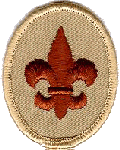|
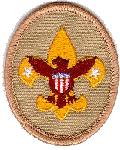 Boy Scout Program Membership
Boy Scouting, one of the traditional membership divisions of the BSA, is available to boys who have earned the Arrow of Light Award and are at least 10 years old, or have completed the fifth grade and are at least 10 years old, or who are 11, but not yet 18 years old. The program achieves the BSA's objectives of developing character, citizenship, and personal fitness qualities among youth by focusing on a vigorous program of outdoor activities.
Boy Scout program membership, as of December 31, 2004, is
988,995 Boy Scouts/Varsity Scouts
|
|
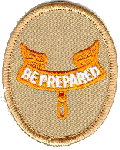 Volunteer Scouters
Thousands of volunteer leaders, both men and women, are involved in the Boy Scouting program. They serve in a variety of jobs — everything from unit leaders to chairmen of troop committees, committee members, merit badge counselors, and chartered organization representatives.
Like other phases of the program, Boy Scouting is made available to community organizations having similar interests and goals. Chartered organizations include professional organizations; governmental bodies; and religious, educational, civic, fraternal, business, labor, and citizens' groups. Each organization appoints one of its members as the chartered organization representative. The organization is responsible for leadership, the meeting place, and support for troop activities.
|
|
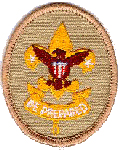 Who Pays for It?
|
|
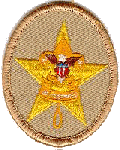 Aims and Methods of the Scouting Program
The methods by which the aims are achieved are listed below in random order to emphasize the equal importance of each.
Ideals. The ideals of Boy Scouting are spelled out in the Scout Oath, the Scout Law, the Scout motto, and the Scout slogan. The Boy Scout measures himself against these ideals and continually tries to improve. The goals are high, and as he reaches for them, he has some control over what and who he becomes.
Patrols. The patrol method gives Boy Scouts an experience in group living and participating citizenship. It places responsibility on young shoulders and teaches boys how to accept it. The patrol method allows Scouts to interact in small groups where members can easily relate to each other. These small groups determine troop activities through elected representatives.
Outdoor Programs. Boy Scouting is designed to take place outdoors. It is in the outdoor setting that Scouts share responsibilities and learn to live with one another. In the outdoors the skills and activities practiced at troop meetings come alive with purpose. Being close to nature helps Boy Scouts gain an appreciation for the beauty of the world around us. The outdoors is the laboratory in which Boy Scouts learn ecology and practice conservation of nature's resources.
Advancement. Boy Scouting provides a series of surmountable obstacles and steps in overcoming them through the advancement method. The Boy Scout plans his advancement and progresses at his own pace as he meets each challenge. The Boy Scout is rewarded for each achievement, which helps him gain self-confidence. The steps in the advancement system help a Boy Scout grow in self-reliance and in the ability to help others.
Associations With Adults. Boys learn a great deal by watching how adults conduct themselves. Scout leaders can be positive role models for the members of the troop. In many cases a Scoutmaster who is willing to listen to boys, encourage them, and take a sincere interest in them can make a profound difference in their lives.
Personal Growth. As Boy Scouts plan their activities and progress toward their goals, they experience personal growth. The Good Turn concept is a major part of the personal growth method of Boy Scouting. Boys grow as they participate in community service projects and do Good Turns for others. Probably no device is as successful in developing a basis for personal growth as the daily Good Turn. The religious emblems program also is a large part of the personal growth method. Frequent personal conferences with his Scoutmaster help each Boy Scout to determine his growth toward Scouting's aims.
Leadership Development. The Boy Scout program encourages boys to learn and practice leadership skills. Every Boy Scout has the opportunity to participate in both shared and total leadership situations. Understanding the concepts of leadership helps a boy accept the leadership role of others and guides him toward the citizenship aim of Scouting.
Uniform. The uniform makes the Boy Scout troop visible as a force for good and creates a positive youth image in the community. Boy Scouting is an action program, and wearing the uniform is an action that shows each Boy Scout's commitment to the aims and purposes of Scouting. The uniform gives the Boy Scout identity in a world brotherhood of youth who believe in the same ideals. The uniform is practical attire for Boy Scout activities and provides a way for Boy Scouts to wear the badges that show what they have accomplished.
|
|
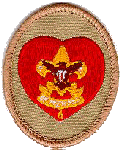 Outdoor Activities
The BSA conducts a national Scout jamboree every four years and participates in world Scout jamborees (also held at four-year intervals). Fort A. P. Hill, Virginia, was the site of the 2001 National Scout Jamboree.
|
|
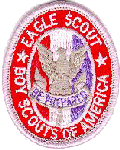 The Beginning of Scouting
In this country and abroad at the turn of the century, it was thought that children needed certain kinds of education that the schools couldn't or didn't provide. This led to the formation of a variety of youth groups, many with the word "Scout" in their names. For example, Ernest Thompson Seton, an American naturalist, artist, writer, and lecturer, originated a group called the Woodcraft Indians and in 1902 wrote a guidebook for boys in his organization called the Birch Bark Roll. Meanwhile in Britain, Robert Baden-Powell, after returning to his country a hero following military service in Africa, found boys reading the manual he had written for his regiment on stalking and survival in the wild. Gathering ideas from Seton, America's Daniel Carter Beard, and other Scoutcraft experts, Baden-Powell rewrote his manual as a nonmilitary skill book, which he titled Scouting for Boys. The book rapidly gained a wide readership in England and soon became popular in the United States. In 1907, when Baden-Powell held the first campout for Scouts on Brownsea Island off the coast of England, troops were spontaneously springing up in America.
William D. Boyce, a Chicago publisher, incorporated the Boy Scouts of America in 1910 after meeting with Baden-Powell. (Boyce was inspired to meet with the British founder by an unknown Scout who led him out of a dense London fog and refused to take a tip for doing a Good Turn.) Immediately after its incorporation, the BSA was assisted by officers of the YMCA in organizing a task force to help community organizations start and maintain a high-quality Scouting program. Those efforts climaxed in the organization of the nation's first Scout camp at Lake George, New York, directed by Ernest Thompson Seton. Beard, who had established another youth group, the Sons of Daniel Boone (which he later merged with the BSA), provided assistance. Also on hand for this historic event was James E. West, a lawyer and an advocate of children's rights, who later would become the first professional Chief Scout Executive of the Boy Scouts of America. Seton became the first volunteer national Chief Scout, and Beard, the first national Scout commissioner.
|
|
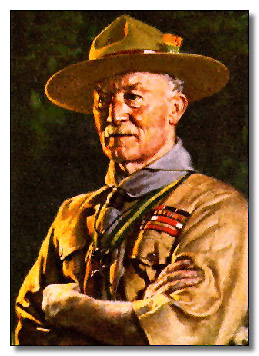 Publications
|
|
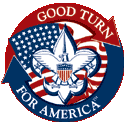 Conservation
|


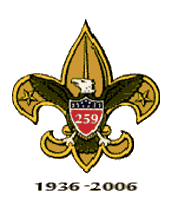 Troop 259
|
